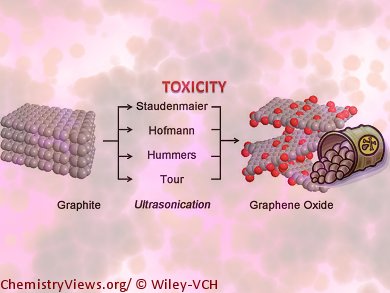The biological applications of graphene oxide (GO)-based materials have been widely explored due to their potential for bacterial inhibition, bio-analysis, and drug delivery. Although various cytotoxicity investigations have been carried out for both pristine and functionalized graphene on different cell types, they have produced contradictory results.
It has been widely assumed that the properties of GOs produced by the four current oxidative methods (Staudenmaier, Hofmann, Hummers, and Tour) are similar. However, given the different conditions used in these methods, it is inevitable that the amount and type of oxygen-containing functionalities present on GO nanomaterials differ significantly, which could influence the toxicity of the GO.
M. Pumera and E. L. K. Chng, Nanyang Technological University, Singapore, have used two different, mitochondrial activity-based assays to systematically study the effect of GO particles produced by the four different methods on a human lung carcinoma epithelial cell line. This cell line was chosen as it could serve as the point of entry into the body for graphene nano/micropowders due to its position within the respiratory tract.
Although all four GOs showed strong dose-dependent cytotoxic responses, the different oxidizing methods clearly resulted in differing cytotoxicity, with the extent of oxidation and number of carbonyl groups being critical factors.
- The Toxicity of Graphene Oxides: Dependence on the Oxidative Methods Used,
Elaine Lay Khim Chng, Martin Pumera,
Chem. Eur. J. 2013.
DOI: 10.1002/chem.201300824


